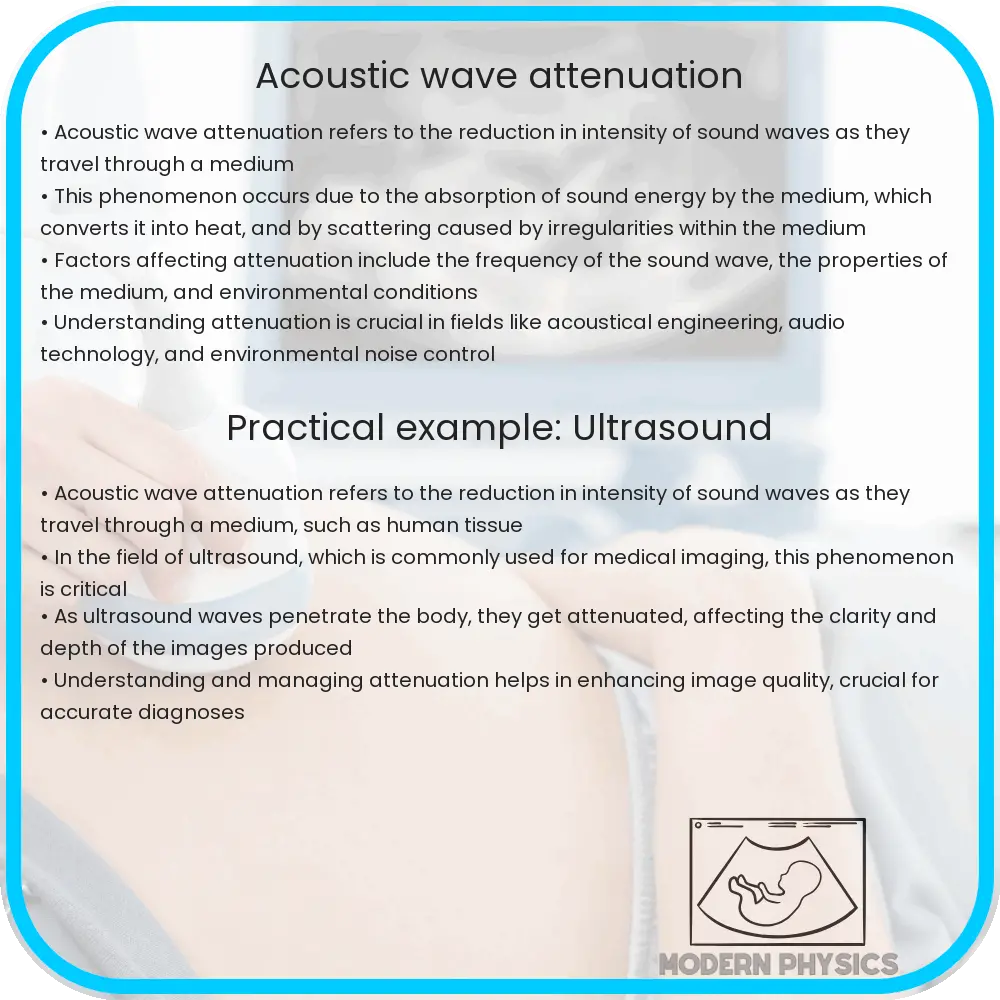Explore factors affecting acoustic wave attenuation and its significance in engineering and science, focusing on medium properties, wave frequency, and scattering.

Understanding Acoustic Wave Attenuation: Factors and Analysis
Acoustic wave attenuation refers to the reduction in intensity of sound waves as they propagate through a medium. This phenomenon is crucial in various fields such as acoustics, materials science, and engineering. Understanding how and why acoustic attenuation occurs can aid in the design of better acoustical materials, improve sound quality in environments, and enhance the effectiveness of sonar equipment.
Factors Affecting Acoustic Wave Attenuation
Several key factors influence the attenuation of sound waves. These include:
- Medium Properties: The composition and characteristics of the medium through which the sound travels significantly affect attenuation. Properties such as density, elasticity, and temperature of the medium can determine how much energy is lost from the sound wave as it travels.
- Frequency of the Sound Wave: Generally, higher frequency sound waves attenuate more rapidly than lower frequency waves. This is because higher frequency waves tend to scatter and absorb more energy as they interact with the molecules in the medium.
- Geometric Spreading: As sound waves propagate, they spread out geometrically. This spreading leads to a decrease in wave intensity proportional to the distance traveled, described mathematically as I ~ 1/d2, where I is the intensity and d is the distance from the source.
- Viscous Absorption: In fluids, the viscosity of the medium can cause a significant amount of energy loss in sound waves, turning the wave energy into heat. This effect is particularly pronounced in gases and liquids with high viscosity.
- Scattering: Sound waves can be scattered by inhomogeneities within the medium, such as particles or bubbles. Scattering redistributes the energy of the sound wave and can lead to attenuation, especially in heterogeneous materials.
Analysis of Acoustic Wave Attenuation
To quantitatively analyze acoustic wave attenuation, it is crucial to consider both intrinsic and extrinsic factors. The equation generally used to describe the attenuation of sound intensity (I) as a function of distance (x) in a medium is:
I(x) = I0 * exp(-α * x)
where:
- I0 is the initial intensity of the sound wave.
- α represents the attenuation coefficient, which quantifies the rate of energy loss per unit distance and is dependent on both medium properties and wave frequency.
- exp signifies the exponential function which mathematically models the decay of wave intensity over distance.
This formula provides a fundamental understanding of how sound waves diminish over distance in a given medium. It is particularly useful not only in theoretical physics but also in practical applications requiring precise control over sound propagation.
Practical Applications of Understanding Acoustic Wave Attenuation
Knowledge of acoustic wave attenuation has practical applications in several areas:
- Noise Control Engineering: By understanding how sound waves attenuate, engineers can design more effective noise reduction methods for industrial, residential, and transportation environments.
- Medical Ultrasound Imaging: In medical diagnostics, controlling the attenuation of ultrasound waves allows for clearer imaging. Adjusting frequency and understanding medium properties can greatly enhance the quality of ultrasound images.
- Underwater Acoustics: Sonar technology relies heavily on understanding how sound attenuates in water. This information is crucial for submarine navigation, underwater communication, and marine biology research.
- Building Acoustics: Architects and construction engineers use knowledge of sound attenuation to design buildings that have better soundproofing, enhancing privacy and comfort for occupants.
Conclusion
Understanding acoustic wave attenuation is a fundamental aspect of acoustics that bridges theory and practice in engineering and science. By examining the various factors that affect how sound waves lose intensity—such as medium properties, frequency, and scattering—individuals in diverse fields can innovate and improve technologies related to sound management. The analysis of sound attenuation through mathematical equations like I(x) = I0 * exp(-α * x) is crucial not only for theoretical exploration but also for practical applications, including noise control, medical imaging, and architectural design. Consequently, the knowledge and application of these principles allow for advancements that can improve quality of life, enhance safety, and facilitate scientific discovery.
